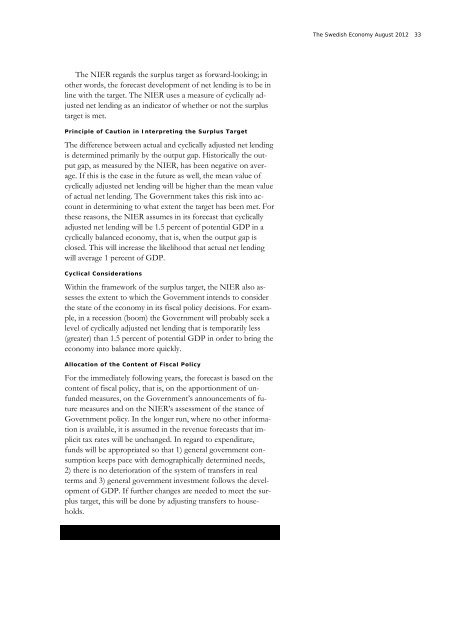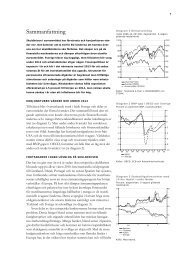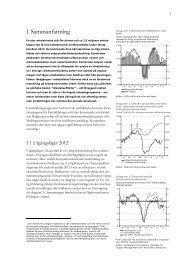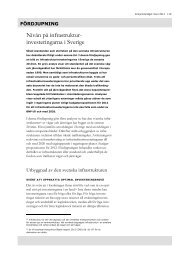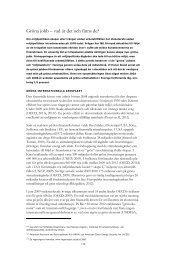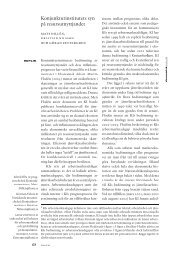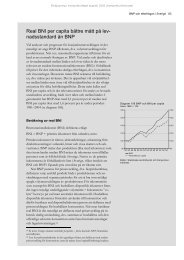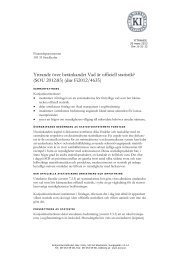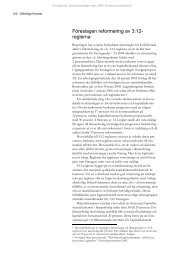Create successful ePaper yourself
Turn your PDF publications into a flip-book with our unique Google optimized e-Paper software.
<strong>The</strong> <strong>Swedish</strong> <strong>Economy</strong> <strong>August</strong> <strong>2012</strong> 33<strong>The</strong> NIER regards the surplus target as forward-looking; inother words, the forecast development of net lending is to be inline with the target. <strong>The</strong> NIER uses a measure of cyclically adjustednet lending as an indicator of whether or not the surplustarget is met.Principle of Caution in Interpreting the Surplus Target<strong>The</strong> difference between actual and cyclically adjusted net lendingis determined primarily by the output gap. Historically the outputgap, as measured by the NIER, has been negative on average.If this is the case in the future as well, the mean value ofcyclically adjusted net lending will be higher than the mean valueof actual net lending. <strong>The</strong> Government takes this risk into accountin determining to what extent the target has been met. Forthese reasons, the NIER assumes in its forecast that cyclicallyadjusted net lending will be 1.5 percent of potential GDP in acyclically balanced economy, that is, when the output gap isclosed. This will increase the likelihood that actual net lendingwill average 1 percent of GDP.Cyclical ConsiderationsWithin the framework of the surplus target, the NIER also assessesthe extent to which the Government intends to considerthe state of the economy in its fiscal policy decisions. For example,in a recession (boom) the Government will probably seek alevel of cyclically adjusted net lending that is temporarily less(greater) than 1.5 percent of potential GDP in order to bring theeconomy into balance more quickly.Allocation of the Content of Fiscal PolicyFor the immediately following years, the forecast is based on thecontent of fiscal policy, that is, on the apportionment of unfundedmeasures, on the Government’s announcements of futuremeasures and on the NIER’s assessment of the stance ofGovernment policy. In the longer run, where no other informationis available, it is assumed in the revenue forecasts that implicittax rates will be unchanged. In regard to expenditure,funds will be appropriated so that 1) general government consumptionkeeps pace with demographically determined needs,2) there is no deterioration of the system of transfers in realterms and 3) general government investment follows the developmentof GDP. If further changes are needed to meet the surplustarget, this will be done by adjusting transfers to households.


